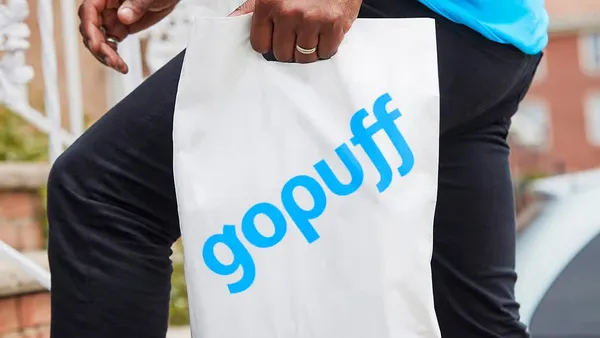Dive Brief:
- WPP reported revenue less pass-through costs, an important measure of agency health, dropped 2.7% on a like-for-like basis to 2.48 billion pounds, or about $3.2 billion, in Q1, according to an earnings statement. Total revenue slid 5% year over year on a reported basis, or 0.7% like-for-like, to 3.2 billion pounds.
- GroupM, the group’s media-buying arm, declined 0.9% over the period while other global integrated agencies were down 4.4%. The company contended with sharp pullbacks in regions including China, where growth slid 17.4% compared to the year-ago period.
- The results fell in line with internal expectations, and WPP upheld full-year projections of flat to negative growth, with improvements expected in the second half. Executives acknowledged that tariffs could impact clients’ advertising and promotional spending.
Dive Insight:
WPP continued to face headwinds in the opening stretch of the year, which saw the loss of some major accounts, including aspects of the Coca-Cola business in North America, and ongoing global uncertainty. The ad-holding group factored volatility into its full-year guidance, which expects growth in the range of flat to down 2%, and noted that it has not yet seen meaningful changes in client spending patterns as a result of tariffs, including in potentially hard-hit sectors like automotive. However, that situation could change, and soon, assuming the Trump administration moves forward with levies on key trading partners.
“[This] is a more challenging macro environment with tariff uncertainty. And while WPP is not directly impacted by tariffs, they will undoubtedly impact many of our clients and where and how they prioritize their margin investments in advertising and promotion,” said WPP CEO Mark Read on a call discussing the results with analysts.
Like other advertising executives, Read emphasized that marketers have become better accustomed to navigating periods of intense chaos due to events like the pandemic, Ukraine war and inflation. The chief executive added that tariffs could have an “asymmetric” impact on clients. A small pool may deal with massive amounts of disruption on cost of product, while others will experience more limited shocks. That said, many brands will deal with the consequences of a sinking economy and less confident consumers regardless of their vertical. IPG, a rival that reported earnings just a day before WPP, said that advertisers are busy “scenario planning” to stay reactive to fresh developments in the trade war saga.
Responding to an analyst question, Read dismissed the idea that there was a “pull forward” in spending in Q1 from categories like automotive that have been subject to high levels of tariff uncertainty. Some brands have ramped up marketing activity to try and encourage consumers to buy goods ahead of expected price increases.
WPP notched some wins in Q1, expanding its work with beer maker Heineken to include global shopper marketing and commerce duties. The company also acquired InfoSum as part of its push to bolster GroupM’s data-driven capabilities and artificial intelligence initiatives. WPP has been prioritizing adoption of its Open operating system, which is now used by about 60% of client-facing staff.
However, GroupM, which WPP has made extensive efforts to restructure, is still a work in progress, dogged by legacy client losses such as Pfizer and softness in markets including China. WPP in recent weeks has also been subject to unflattering coverage over its return-to-office push, which has resulted in overcrowded work spaces and frustrated employees.














